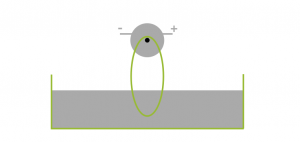shape memory alloys – reading with your eyes open
What are the limits of a general media article? Will it be an enlightening read about a new technology or will it simply be marketing?
“Cleantech’s next heat wave could come from Smarter Alloys”
appeared in the April 17th Globe and Mail. I couldn’t really understand the title but I was interested in Smarter Alloys. There was some buzz around them and I was curious.
Will I come out ahead? Will this article answer my questions? The author is an advisor with MaRS and an adjunct professor at York University. These should be positives. It was also a substantial bit of writing, consuming a good fraction of a page; another positive. I decided to read.
yellow flags
I might be nitpicking, but some odd examples were chosen to demonstrate waste heat. I was only at the second paragraph and yellow flags began falling on the ground. First, the author included uranium, and the fission reaction, as an example of waste heat. Yes, there will likely be waste heat, but is a fission process a good example? Is it as quantifiable as, say, processes that burn fuel? Another example cited the warm air flowing at the back of a refrigerator or air conditioner. Yes, there will be waste heat associated with the compressor, but there is also heat that was “removed” from the space being cooled. Maybe, one can extract energy from this heat, but there is room for clarification. Again, it isn’t the clearest example.
red flags
Then came the red flags. They hit the field with the author’s repeated use of marketing language. “Seemingly magical”,“perfected”, “ … IP will give company big edge …”, “ … race to world’s most efficient heat engine … ” are all examples of marketing phrasing. They beg the user to become excited. This type of promotional language is a slippery slope and detracts from a true discussion of what is being developed. I would rather see a technology discussed on its merits than see marketing language used to generate excitement. For me, marketing language hides or glosses over a story.
Smarter Alloys
What did Smarter Alloys develop? What is their technology? They developed a particular shape memory alloy (SMA). Like all SMAs it undergoes a shape change when exposed to a temperature cycle. More particularly, the article discusses a system for generating electricity. A belt made from the SMA has one “end” connected to a generator, while the other end rotates through a warm water bath. A temperature difference between the water, which mimics a source of waste heat, and air causes a shape change in the belt and it rotates, to produce electricity.
First question: how efficient is the system? The author does not provide this number or even discuss efficiency. This is noticeable as he mentions a very precise 72% from a “German” study when discussing the examples of waste heat. The 70% range for waste heat is a well known number for combustion processes.
How much heat can the current system convert to electricity? The generator may simply be for demonstration, but a first guess is that we would be told if the efficiency was high.
The ability to convert waste heat to usable energy is at the heart of considerable research. Shape memory alloys are one example. Thermoelectric materials are another. To date, the latter’s low efficiency has prevented commercial applications. If a Smarter Alloys’ system can efficiently extract energy from waste heat it would be interesting.
Intellectual Property
Finally, I want to touch on IP. As noted above the article states “ … IP will give company a big edge …”. This may be true, but we have nowhere near enough information to assert the role of IP here. Like many fields, there are numerous technologies directed at the recovery of waste heat and each of these will have numerous “levels” of patents. A first bit of digging found issued patent US9,186,853 and pending patent application US20160068938. The front page of these documents indicates they both stem from the same applications filed in 2009 and 2010. I do not want to discuss these further here. However, it is sufficient and prudent to say the IP picture is likely complex and can not be summarized with one catch phrase.
An article in The Globe and Mail can not be considered an expansive synopsis of a field. However, this particular article places the technology in a curiosity category instead of a valid development amongst many. There are likely some things that I can overlook, but the marketing language was a clear red flag. By the end a number of questions are incompletely answered or unanswered. One might say that you always have to read with your eyes open.




